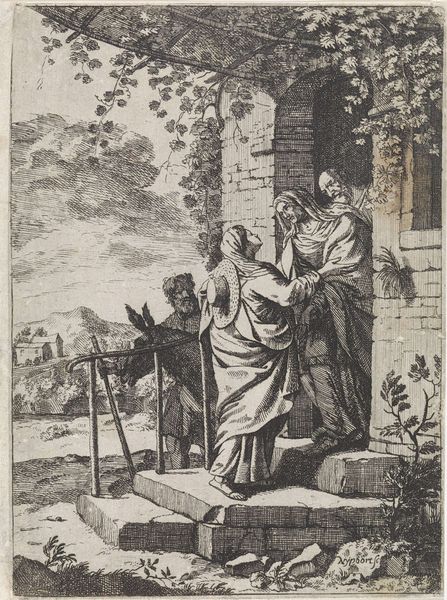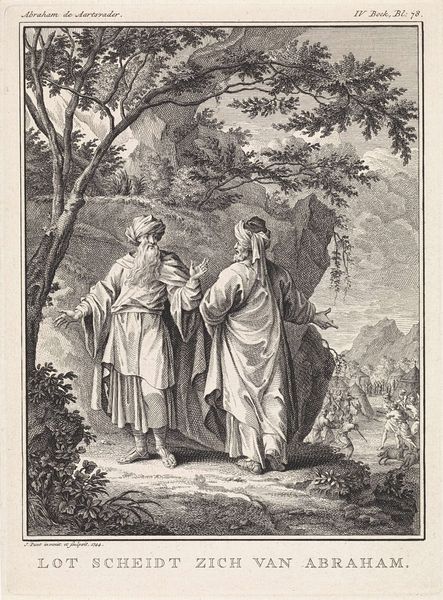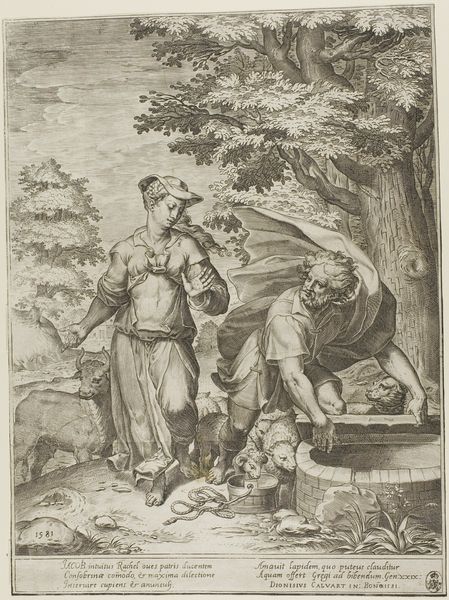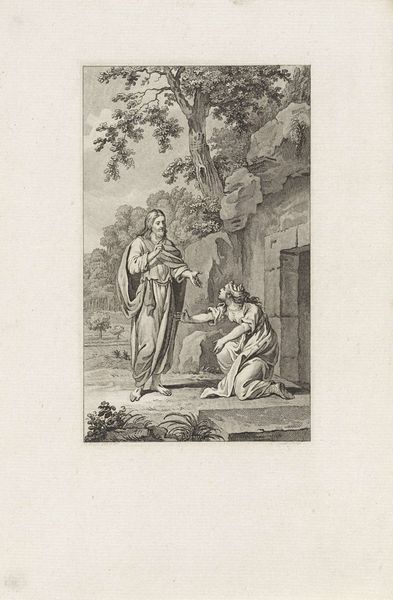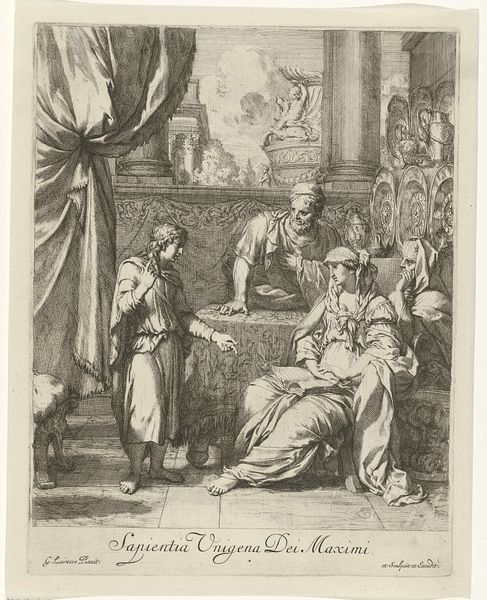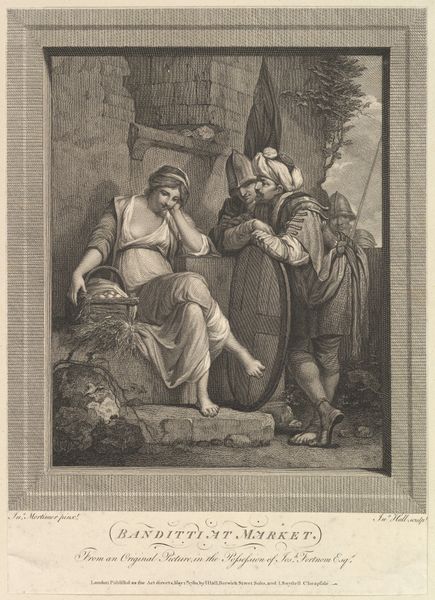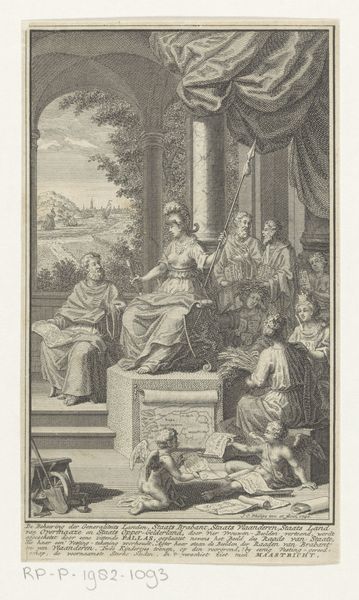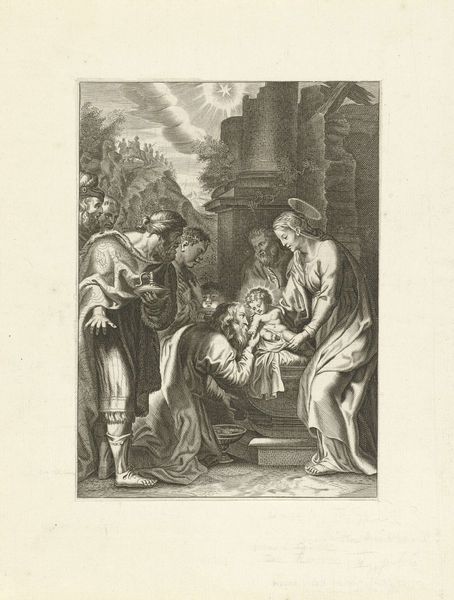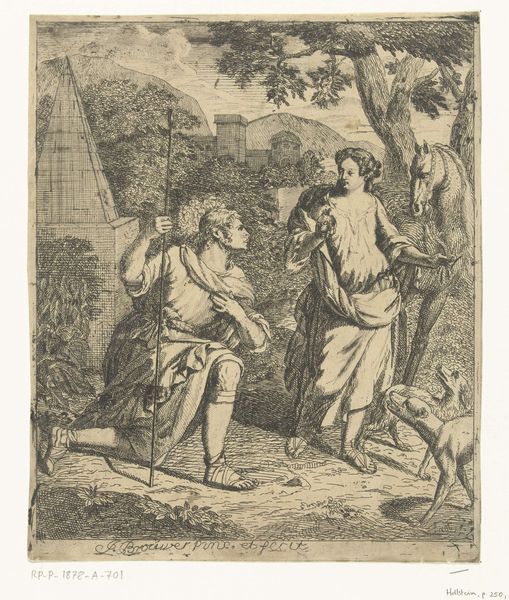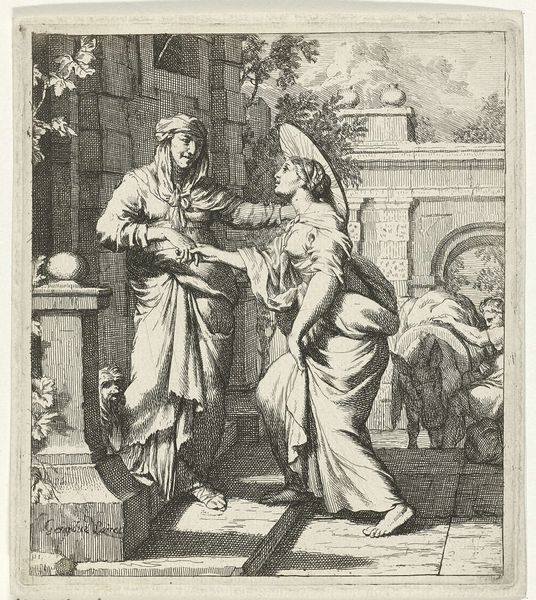
drawing, print, pencil
#
drawing
#
baroque
# print
#
landscape
#
figuration
#
pencil
#
history-painting
Dimensions: sheet: 14 x 11 in. (35.5 x 28 cm)
Copyright: Public Domain
Curator: Nicholas Verkolje rendered this scene, “Christ and the Woman of Samaria,” sometime between 1698 and 1746. It’s currently held here at the Met. Editor: My first impression is one of serene drama. The grey pencil hues create a tranquil, almost ethereal mood, but the careful staging suggests a significant, pivotal moment. Curator: Precisely! The composition cleverly juxtaposes the figures against a backdrop featuring both architecture and nature, which serves to ground the interaction in specific yet symbolic spaces. The well is crucial here. Editor: Absolutely, the formal choices highlight that spatial tension! The figures of Christ and the Samaritan woman are intimately arranged, and this creates an enclosed frame. Note, also, the classical architecture juxtaposed with the naturalistic landscape, contributing to an evocative spatial tension. Curator: You're correct, and those elements aren’t just aesthetic choices. They allude to themes of faith, cultural intersection, and personal revelation within a broader historical and social framework. It references the dialogue between societal and moral values of the time. Editor: It strikes me how effectively Verkolje used light and shadow. Notice the gentle gradations in tone. There’s almost no pure black or white which enhances the dreamy atmospheric effects while drawing the viewer’s focus towards Christ’s hands, almost as if illuminating the central moral of the piece. Curator: Indeed. He deftly handles the textures—the rough stone of the well, the softer fabrics of the clothing—giving depth and tangibility to the spiritual encounter. Think also, that images such as this were designed to circulate widely through print culture, and Verkolje likely understood his viewership well. Editor: The details in the figures' expressions contribute to its impact. Christ seems intensely focused, almost pleading; the woman exhibits a compelling mixture of curiosity and apprehension. The emotional engagement really enriches the drawing. Curator: The historical importance of this piece is significant and demonstrates religious artwork in 18th century Europe. I do find myself drawn back to the formal clarity and its thematic weight as well, with an appreciation of how effectively Verkolje distilled an atmosphere that continues to prompt introspective consideration. Editor: And for me, the artist has certainly left an indelible mark on my aesthetic sensibilities. Thank you!
Comments
No comments
Be the first to comment and join the conversation on the ultimate creative platform.

